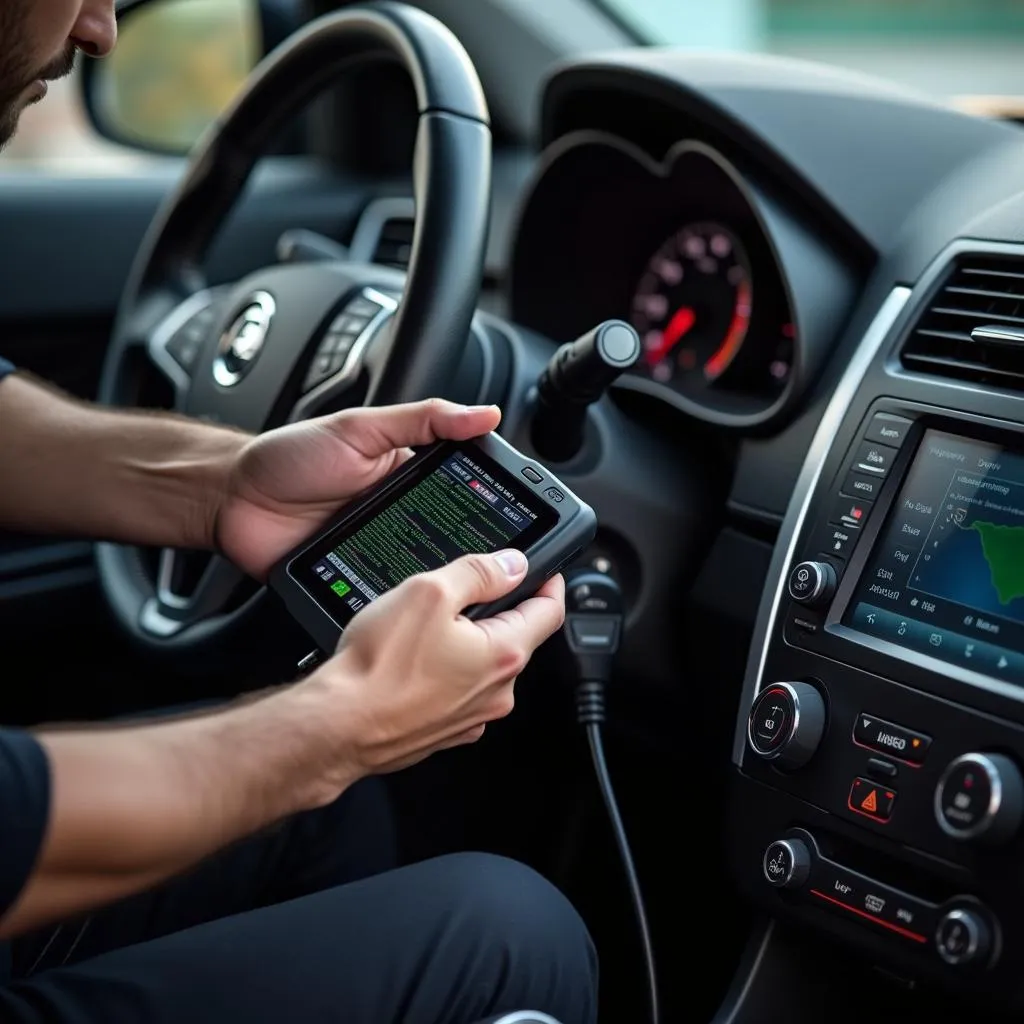If you’re asking, “What is a passive anti-theft device?”, you’ve come to the right place. Many modern vehicles come equipped with a system designed to make your car less appealing to thieves, known as a passive anti-theft system. Unlike its active counterpart which requires driver intervention, a passive system works silently in the background to keep your vehicle secure. Let’s delve deeper into understanding this essential security feature.
How Does a Passive Anti-theft Device Work?
A passive anti-theft device operates automatically without any action required from the driver. The most common type uses a transponder chip embedded within your car key. This chip communicates with your vehicle’s engine control unit (ECU). When you insert or bring your key fob close to the ignition, the transponder sends a unique code to the ECU. If the code is recognized, the vehicle will start. If the ECU doesn’t receive the correct signal, it assumes a theft attempt and prevents the engine from starting.
 Car key with transponder chip
Car key with transponder chip
Common Signs of Passive Anti-theft Device Issues
A malfunctioning passive anti-theft device can cause frustrating starting problems. Here are some common signs that your system might need attention:
- Engine Cranks but Won’t Start: This is a classic symptom of an issue with the immobilizer system.
- Security Light Flashing: A flashing security light on your dashboard, often depicting a key or car symbol, indicates a potential problem with the system.
- Key Fob Not Working: If your key fob doesn’t lock/unlock the doors or start the vehicle, it could be due to a dead battery, or it could be a sign of a faulty transponder chip or a problem with the receiver in your car.
What You Need to Diagnose and Fix Passive Anti-theft Device Issues
Diagnosing and fixing issues with your car’s passive anti-theft system often requires specialized tools and knowledge. Here’s what you might need:
- OBD-II Scanner: A quality OBD-II scanner, like those offered by Cardiagtech, can read the codes stored in your vehicle’s ECU, pinpointing the problem with the anti-theft system.
- Programming Tools: In some cases, you might need specialized programming tools to reprogram keys, replace faulty components, or reset the immobilizer system.
- Professional Help: If you’re not comfortable working on your car’s electronics, seeking help from a qualified automotive locksmith or mechanic is always recommended.
 Mechanic using OBD2 scanner on a car
Mechanic using OBD2 scanner on a car
Troubleshooting Steps for Common Passive Anti-theft Device Issues
While we always recommend professional help for complex car issues, here are some basic troubleshooting steps you can try:
- Check Key Fob Battery: Replace the battery in your key fob. It’s often the simplest solution.
- Try a Spare Key: If you have a spare key, try using it to start the vehicle.
- Inspect the Ignition Cylinder: Ensure nothing is obstructing the ignition cylinder where you insert your key.
- Check Fuses: Consult your owner’s manual to locate and inspect the fuses related to the anti-theft system.
If these steps don’t resolve the problem, further diagnosis with specialized tools is necessary.
Frequently Asked Questions
Here are some common questions related to passive anti-theft devices:
![]() Car with security system icon
Car with security system icon
Q: How do I know if my car has an anti-theft discount?
A: Your car insurance provider will be able to tell you if your vehicle qualifies for a discount based on its anti-theft features. You can also learn more about anti-theft discounts here.
Q: What is the difference between passive and active anti-theft devices?
A: A passive system operates automatically, while an active system, like a car alarm, requires driver activation. You can learn more about the differences between the two here.
Q: Can I install a passive anti-theft device myself?
A: Installing a passive anti-theft system requires significant technical knowledge and is best left to professionals.
Q: What does “anti-theft system” mean in general?
A: In the context of vehicles, an “anti-theft system” refers to any device or feature intended to deter theft. This could range from simple mechanical locks to advanced electronic immobilizers. You can read more about different types of anti-theft systems here.
Conclusion
Passive anti-theft devices are essential security features in modern vehicles, offering valuable protection against theft. While they work seamlessly in the background most of the time, understanding how they function and recognizing potential problems can save you from a major headache.
CARDIAGTECH offers a range of diagnostic and programming tools for automotive professionals and DIY enthusiasts. If you’re experiencing issues with your car’s anti-theft system, explore our range of products or contact us for expert advice.

